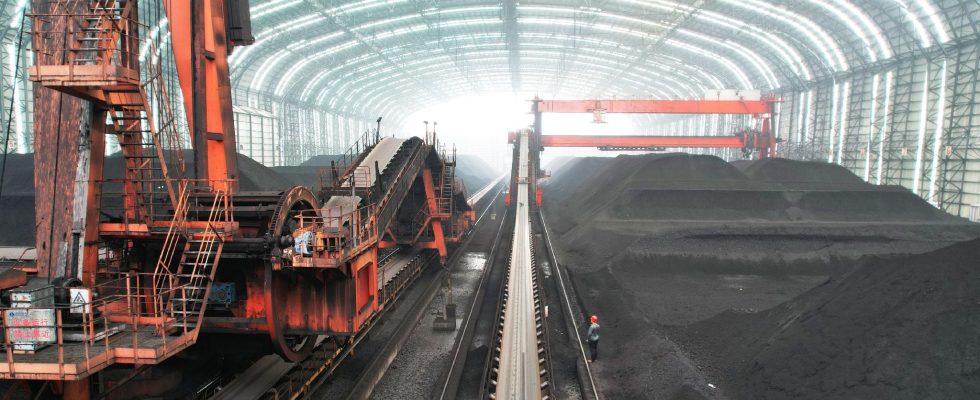Can China achieve its climate goals for 2025? This seems very difficult, responds a study published this Thursday, February 22 by the Center for Research on Energy and Clean Air (Crea), an independent group based in Finland. The fault is partly due to the country’s increased dependence on fossil fuels, in order to support its weakening economy.
China, the largest emitter of CO2, has committed to stabilizing or reducing its emissions by 2030 and achieving carbon neutrality by 2060. As part of the Paris climate agreement, Beijing has also committed to fulfilling a series of transition objectives. The country must ensure that 20% of its energy comes from alternatives to fossil fuels and must reduce the carbon intensity of its economy (amount of CO2 emitted in relation to its GDP) by 2025.
+10% emissions in three years
But the rebound in energy consumption experienced by the country following the Covid-19 pandemic means that “all these objectives are seriously out of reach after 2023”, underlines the Crea report published on the Carbon Brief website. CO2 emissions from the country’s energy sector increased by 5.2% last year – and by 12% between 2020 and 2023 – at a time when Beijing was burning more coal to meet growing demand for electricity, with the resumption of economic activity post-Covid.
Unfavorable weather conditions also aggravated the problem. A series of droughts has reduced hydroelectric power production to its lowest level in more than two decades. As a result, Beijing must achieve a “record reduction” of 4% to 6% in its emissions to achieve its objective for 2025, estimate Crea researchers.
Incentives for coal development
However, this increase in emissions is not the result of chance. Crea researchers explain that despite Xi Jinping’s promises to “strictly limit” fossil fuels, the reality is quite different. The Chinese government would actually encourage the construction of new coal-fired power plants to create economic activity.
A context which would even be perceived as a “window of opportunity” by the sector. The Crea report points, for example, to the company China Shenhua, the largest coal company in China, which described the period until 2025 as “an opportune time for the construction of thermal power plants”. A supervisor of Chinese state-owned enterprises was pleased that the Inner Mongolia energy group had “seized the political window” for coal-fired power projects.
A double discourse which can be explained by the economic difficulties recently encountered by China. The world’s second-largest economy saw gross domestic product growth of 5.2% last year, one of the weakest seen in decades. The fall of certain Chinese economic behemoths, such as Evergrande in real estate or Zhongzhi in finance, has certainly pushed Beijing to strengthen its economy by all possible means, despite the environmental cost.
Because beyond the level of CO2 emissions, there is also a whole series of key climate objectives which are on the verge of being missed by Beijing: “strictly limit” the demand for coal, “strictly control” the new coal-based electricity production capacities, increase the share of low-emission energies in overall electricity demand, or even increase the share of renewable energies in growing energy demand.
The paradox of renewables
The subject of renewable energies is also subject to a paradox. According to Crea researchers, only “30% of the growth in energy consumption was covered by renewable energies between 2020 and 2023”, while the objective set was more than 50% over the period 2020-2025 . Scientists now say that it is “highly unlikely that this goal will be achieved without a slowdown in the growth of energy consumption”, which does not really seem to be China’s plan in the short term.
Renewable energies may even have had a more negative impact in the short term, particularly in their manufacturing, while China is, by far, the world’s leading producer of solar panels and batteries. The very energy-intensive renewables industry alone would have accounted for 1 point of the increase in CO2 emissions, out of the 5.2% observed in 2023.
“The increase in production will result in a significant reduction in emissions once the products are used,” adds the report, which nevertheless specifies that a large part of the production remains intended for export. But Crea researchers insist that this boom in renewable energies must enable China to be able to achieve its climate objectives. The political impulse still needs to follow.
